Out of the Inkwell is a american film of genre Comedy directed by Dave Fleischer released in USA on 19 april 1919 with Max Fleischer
Out of the Inkwell (1919)
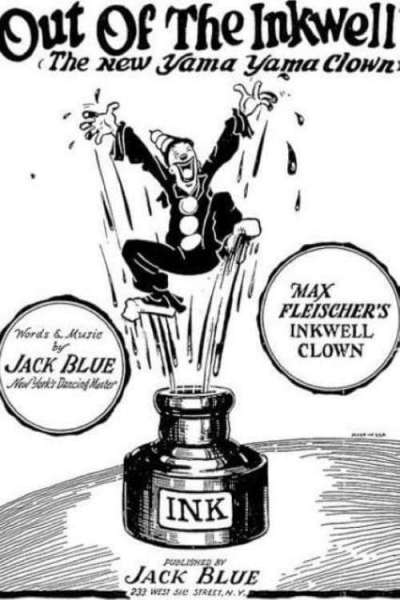
If you like this film, let us know!
Out of the Inkwell was a major animated series of the silent era produced by Max Fleischer from 1918 to 1929.
The series was the result of three short experimental films that Max Fleischer independently produced in the period of 1914–1916 to demonstrate his invention, the Rotoscope, which was a device consisting of a film projector and easel used as an aid for achieving realistic movement for animated cartoons. The Rotoscope would project motion picture film through an opening in the easel, covered by a glass pane serving as a drawing surface. The image on the projected film was traced onto paper, advancing the film one frame at a time as each drawing would be made. Fleischer's younger brother Dave Fleischer was working as a clown at Coney Island, and served as the model for what was to become their first famous character that later evolved as "Koko the Clown."
Out of the Inkwell was begun at the Bray Studio as a monthly entry in The Bray Pictorgraph Screen Magazine produced for Paramount from 1918 to 1920, and later for Goldwyn in 1921. In that same year, The Fleischer brothers started their own studio, and in 1923, the clown who previously had no name came to be known as KO-KO when animation veteran Dick Huemer became the new Director of Animation production. Huemer, who had begun animation with the Mutt and Jeff cartoons in 1916, brought the influence of that series to "Out of the Inkwell" and created a small canine companion named Fitz, who would later evolve into Bimbo in future cartoon series. Huemer also redesigned the clown for animation and led the Fleischers away from their dependency on the Rotoscope for animating. He also defined the drawing style with his distinctive inking quality that the series was famous for.
But it was the integration and interaction of the live action sequences starring Max Fleischer as the artist and creator in contest with his pen and ink creations that propelled the series. Typically, the cartoons start out with live action showing the cartoonist (Max) beginning his day. He begins drawing the characters on paper, or he opens the inkwell and they come out and interact with reality.
The "Out of the Inkwell" series ran from 1918 to mid 1927, was renamed "The Inkwell Imps" for Paramount, and continued until 1929. Fleisher continued in the series, serving as actor, producer, writer, and animator for his studio Out of the Inkwell Films, Inc., producing 62 Out of the Inkwell and 56 Inkwell Imps films. While "The Inkwell Imps" series was replaced by the "Talkartoons" in 1929, Koko the Clown returned in 1931 as a supporting character with Bimbo and Betty Boop. Koko's last theatrical appearance was in the "Betty Boop" cartoon, "Ha-Ha-Ha" (1934), which was a remake of the silent "Out of the Inkwell" film, "The Cure" (1924). Koko had a brief cameo in his only color theatrical appearance in the "Screen Song" entry, "Toys will be Toys" (1949).
In 1950, Stuart Productions released the Bray "Out of the Inkwell" cartoons to television. In 1955, the "Inkwell Imps," along with 2,500 other pre-October 1950 Paramount shorts and cartoons were sold to television packagers, the majority acquired by U.M. & M. TV Corporation. In 1958, Max Fleischer reactivated his studio in a partnership with Hal Seeger, and in 1960 produced a series of 100 Out Of The Inkwell five minute cartoons. In the new color series, KoKo had a clown girlfriend named KoKette and a villain named Mean Moe. Larry Storch provided the voice for KoKo and all of the supporting characters.
Actors

Max Fleischer
(Cartoonist)
Comments
Leave comment :
Suggestions of similar film to Out of the Inkwell
There are 1 films with the same actors, 35 films with the same director, 40053 with the same cinematographic genres (including 2248 with exactly the same 2 genres than Out of the Inkwell), to have finally 70 suggestions of similar films.If you liked Out of the Inkwell, you will probably like those similar films :

The Paneless Window Washer (1937)
, 6minutesDirected by Dave Fleischer
Origin USA
Genres Comedy, Animation
Actors Jack Mercer, Mae Questel, Gus Wickie
Rating70%





Bluto is trying to make a buck by spraying mud on the windows to make people think they're dirty. Up 20 stories (or at least Popeye says that) is Olive Oyl, public stenographer. Wiping all kinds of windows, Popeye and Bluto get into a bitter quarrel between who's better at cleaning windows.
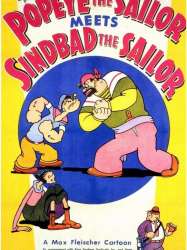 , 17minutes
, 17minutesDirected by Dave Fleischer
Origin USA
Genres Comedy, Fantasy, Adventure, Musical, Animation
Actors Jack Mercer, Mae Questel, Lou Fleischer, Gus Wickie
Rating72%





Dans ce court métrage, Sindbad le marin se proclame « plus grand marin, aventurier et amant du monde ». Popeye le contredit par inadvertance, alors qu'il chante sa chanson habituelle en naviguant à portée de voix de l'île de Sindbad. Sindbad ordonne à son énorme rokh d'enlever la petite amie de Popeye, Olive Oyl, et détruit le vaisseau de Popeye, le forçant ainsi à nager jusqu'au rivage. Alors que Sinbad se délecte de faire d'Olive un trophée, il est interrompu par l'arrivée de Popeye, qu'il défie ensuite lors d'une série d'obstacles pour prouver sa grandeur. Popeye doit alors vaincre le rokh, un géant à deux têtes nommé Boola (une référence aux Trois Stooges) et, enfin, Sindbad lui-même. Grâce à sa fameuse boîte d'épinards, Popeye parviendra à vaincre Sindbad.
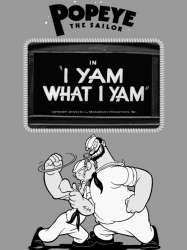
I Yam What I Yam (1933)
, 7minutesDirected by Dave Fleischer
Origin USA
Genres Comedy, Animation
Actors William Costello, Bonnie Poe
Rating68%





Popeye, Olive Oyl et Wimpy font naufrage sur une île d’Indiens hostiles

I'm in the Army Now (1936)
, 6minutesDirected by Dave Fleischer
Origin USA
Genres Comedy, Animation
Actors Jack Mercer, Mae Questel, Gus Wickie
Rating58%





Olive dit à Popeye et Brutus qu’elle aime un homme en uniforme, alors ils essaient de s’inscrire au poste de recrutement - qui ne peut en prendre qu’un
 , 8minutes
, 8minutesDirected by Dave Fleischer, Max Fleischer, Seymour Kneitel
Origin USA
Genres Comedy, Musical, Animation
Actors Jack Mercer, Mae Questel
Rating71%





Dans un orphelinat, les enfants sont tristes car ils ont reçu en cadeau des jouets cassés. Le professeur Grampy voit les enfants en passant dans son traîneau et a une idée pour leur offrir un joyeux Noël.
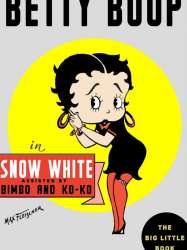
Snow-White (1933)
Directed by Dave Fleischer
Genres Comedy, Fantasy, Musical, Animation
Themes Musical films, Children's films
Actors Mae Questel
Rating73%





A magic mirror, with a face resembling Cab Calloway, proclaims Betty Boop to be "the fairest in the land", much to the anger of the Queen (who resembles Olive Oyl). The Queen orders her guards Bimbo and Koko to behead Betty. With tears in their eyes, they take Betty into the forest and prepare to execute her. Betty escapes into a frozen river, which encloses her in a coffin of ice. This block slips downhill to the home of the seven dwarfs, who carry the frozen Betty into an enchanted cave. Meanwhile, Koko falls down a hole and arrives at the same cave, where the evil Queen turns him into a grotesque creature, all while singing the St. James Infirmary Blues. With her rivals disposed of, the Queen again asks the magic mirror who the fairest in the land is, but the mirror explodes in a puff of magic smoke that returns Betty and Koko to their normal states and changes the Queen into a hideous monster. The queen monster chases the protagonists until Bimbo grabs its tongue and, with one mighty yank turns it inside out. Betty, Koko, and Bimbo dance around in a circle of victory as the film ends.
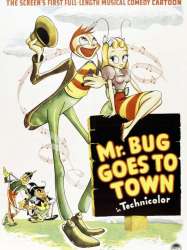
Mr. Bug Goes to Town (1941)
, 1h17Directed by Shamus Culhane, Dave Fleischer, Al Eugster
Origin USA
Genres Comedy, Musical theatre, Fantasy, Musical, Animation
Themes Films about animals, Feminist films, Films about music and musicians, Films about insects, Musical films, Political films, Children's films
Actors Jack Mercer, Jean Rhys, Tedd Pierce, Pinto Colvig, Marjorie Hines, Guinn "Big Boy" Williams
Rating68%





Les amours de Hoppity le criquet et Douce, la fille d'un bourdon, sont troublées par la négligence des humains et le projet de construction d'un gratte-ciel sur leur territoire. L'héroïne est aussi menacée d'un mariage forcé avec Monsieur Scarabée.

Granite Hotel (1940)
Directed by Dave Fleischer
Origin USA
Genres Comedy, Animation
Actors Jack Mercer
Rating57%





Set in a modern stone-age time, the viewer is presented to a gallery of characters like a telephone operator, the ventriloquist "Edgar Burgundy" and his doll "Charlie Bacardi" (a play on Edgar Bergen and Charlie McCarthy) and a barber. A guest in need of a chess player calls the fire department who arrives riding a sauropod.
 , 17minutes
, 17minutesDirected by Dave Fleischer
Origin USA
Genres Comedy, Animation
Actors Jack Mercer, Mae Questel, Lou Fleischer, Gus Wickie
Rating77%





Popeye le marin, accompagné d'Olive Oyl et Wimpy, est envoyé pour arrêter le redoutable bandit Abu Hassan et sa force de quarante voleurs.

The Dancing Fool (1932)
, 7minutesDirected by Dave Fleischer
Origin USA
Genres Comedy, Animation
Themes Musical films
Actors Billy Murray
Rating61%





Bimbo and Koko are sign painter's they have been hired to paint the lettering on the window of Betty Boop's Dancing School". Betty Boop teaches her animal friends how to dance to the tune of "Dancing to Save Your Soul", the dancing shakes the building and the building crumbles to the ground.
 Connection
Connection